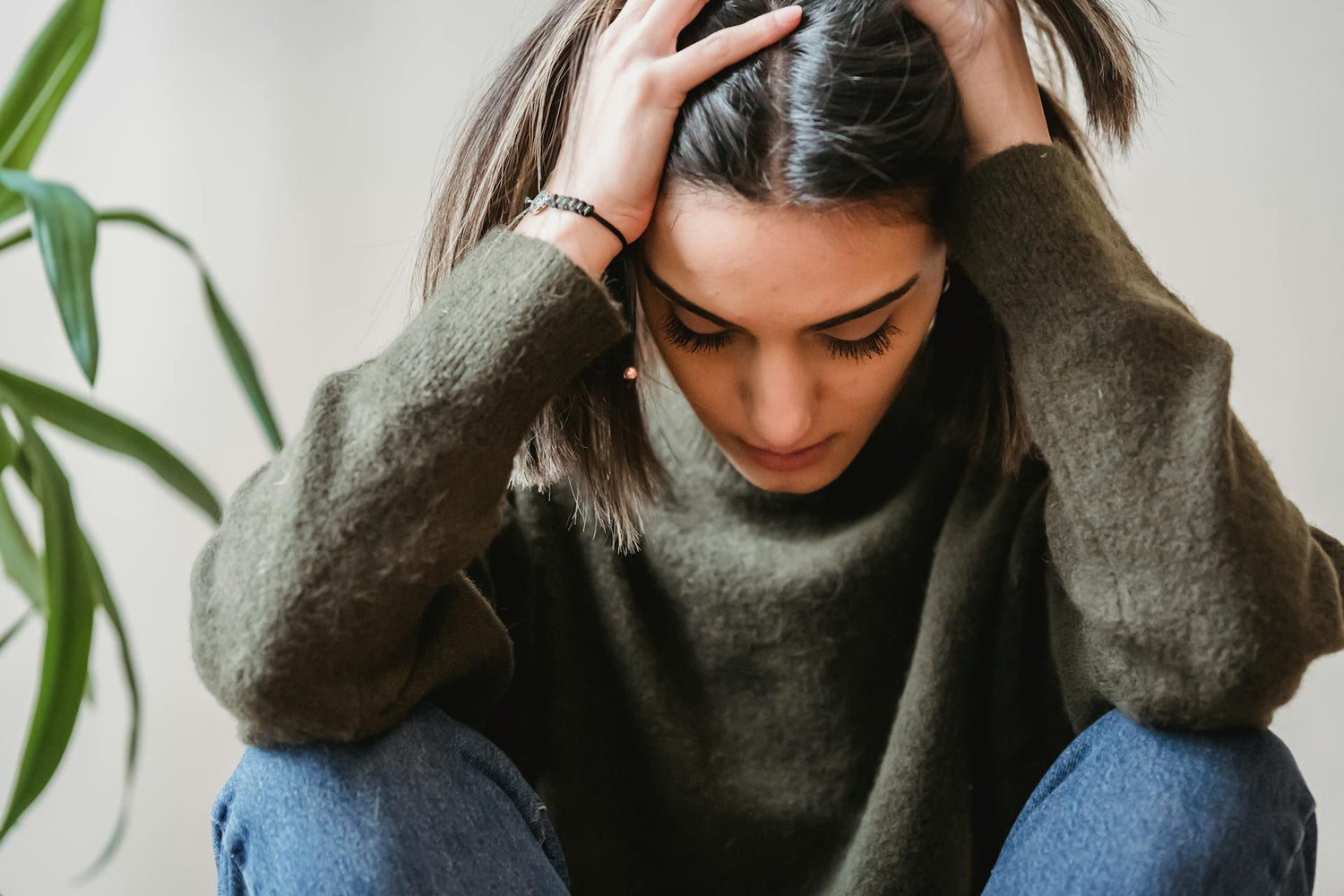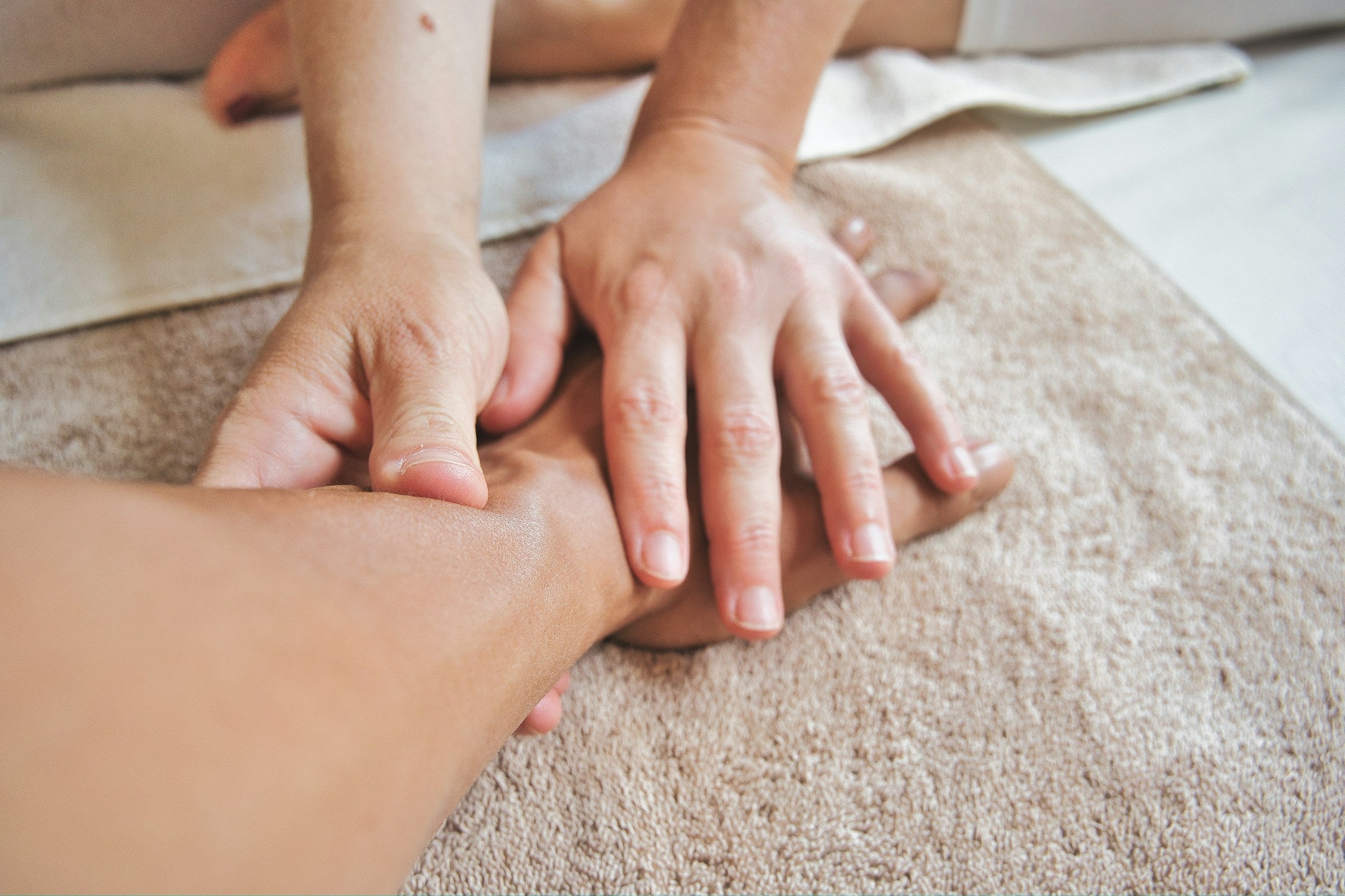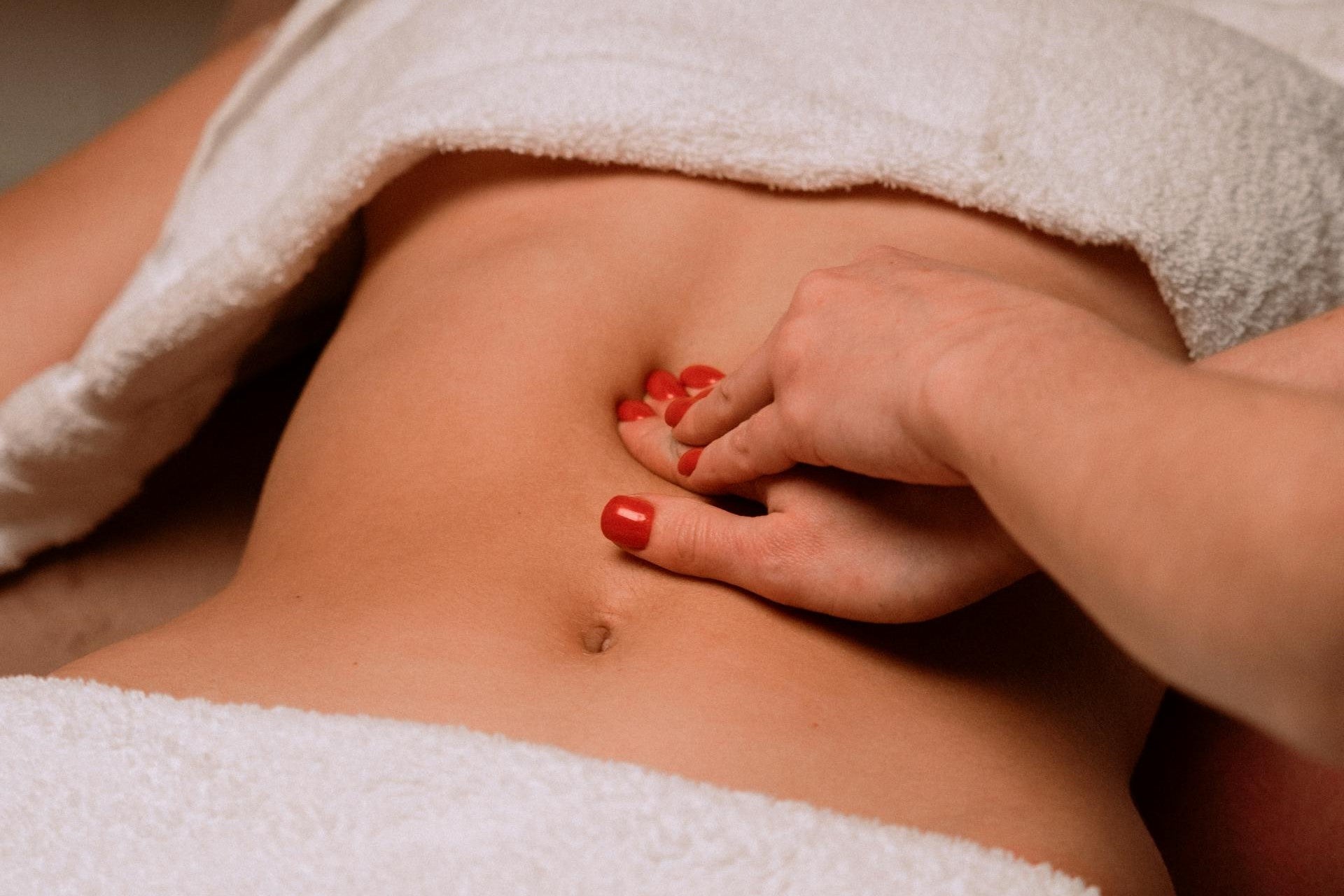Las migrañas son una afección dolorosa que afecta a cientos de millones de personas en todo el mundo y la forma en que se presentan puede ser diferente para cada persona. Esto significa que predecirlas, prevenirlas y encontrar alivio cuando aparecen puede ser un largo camino.
Si padece migrañas, es posible que se pregunte si el masaje podría ayudarlo a prevenir o calmar los síntomas. Después de todo, ofrece muchos beneficios para los músculos y el bienestar general. Pero ¿puede realmente marcar una diferencia en el dolor o la frecuencia de las migrañas?
Continúe leyendo para conocer más sobre la terapia de masajes para la migraña, incluidos los posibles beneficios, la investigación y los consejos que debe conocer antes de comenzar.
¿Qué es una migraña?
Las personas que nunca han tenido migrañas pueden pensar que son simplemente un dolor de cabeza, pero la verdad es que son mucho más graves que eso. Las migrañas son una afección neurológica que puede afectar el cerebro, la médula espinal y los nervios. Y debido a que son tan complejas, su causa puede ser diferente para cada persona.
Además del dolor de cabeza, los síntomas pueden incluir náuseas, vómitos, sensibilidad a la luz y aura (un grupo de síntomas sensoriales que aparecen antes del dolor en sí). Las migrañas también suelen presentarse en cuatro fases, que pueden dejar a la persona sintiéndose discapacitada, angustiada y agotada durante varios días.
Muchos factores pueden desencadenar un ataque de migraña, entre ellos:
- Fluctuaciones en las hormonas
- Cambios en la química cerebral
- Mala calidad del sueño
- Ciertos alimentos o bebidas
Manejo de las migrañas
Dado que las migrañas son tan complejas, la forma en que cada persona las controla puede ser diferente. Dicho esto, es mejor trabajar con un neurólogo para identificar la causa raíz de sus migrañas, así como para encontrar tratamientos que lo ayuden a prevenirlas y aliviarlas. Su neurólogo podría recomendar una combinación de:
Tratamientos con receta
Los medicamentos recetados para las migrañas tienen como objetivo ayudar a prevenir o aliviar los síntomas. Entre ellos, se encuentran los siguientes:
- Analgésicos de venta libre (OTC), triptanos y otras opciones con prescripción médica para detener los ataques de migraña cuando ocurren
- Recetas como medicamentos para la presión arterial, medicamentos anticonvulsivos, inyecciones de Botox y otros para ayudar a prevenir las migrañas antes de que ocurran.
Remedios caseros
Dependiendo de la naturaleza de sus migrañas, ciertas herramientas caseras podrían ayudarlo a aliviar los síntomas cuando aparecen. Por ejemplo, muchas personas con migrañas se dan una ducha caliente o fría, usan una compresa de hielo o incluso beben una pequeña cantidad de cafeína para ayudar a frenar el dolor.
Además de eso, una de las formas más comunes de aliviar una migraña es simplemente recostarse en una habitación oscura y tranquila. Dado que las luces brillantes y los sonidos fuertes son desencadenantes conocidos de la migraña, muchas personas descubren que reducir el estrés y la estimulación puede brindar cierto alivio.
Cuándo consultar a un médico por dolor de migraña
Aunque las migrañas son comunes, es importante saber que no es necesario que te pongas nervioso cuando se presentan. Asegúrate de visitar a tu médico si el dolor empeora o se vuelve más frecuente con el tiempo. Además, es mejor pedir una cita si tus migrañas:
- No mejoran a pesar de usar analgésicos de venta libre
- Están interfiriendo en tu trabajo, tus relaciones o tus tareas diarias.
- Le están causando mucho malestar o angustia y desea encontrar mejores formas de controlar su dolor y vivir cómodamente.
La importancia del estrés y la relajación en el tratamiento de la migraña
Como trastorno neurológico, la migraña tiene varias partes que se deben controlar y, para muchas personas, el estrés puede ser un factor importante. Con el tiempo, el estrés excesivo puede afectar las hormonas del cuerpo, la salud cerebral y el sistema cardiovascular, todo lo cual puede influir en el dolor o la frecuencia de las migrañas.
En una revisión de 2013 , los investigadores observaron que el estrés se ha relacionado con el aumento de la frecuencia de las migrañas con el paso del tiempo. Y en algunas personas, el estrés también puede influir en la hiperalgesia (o mayor sensibilidad al dolor).
Por supuesto, aliviar el estrés probablemente no sea la solución definitiva para las migrañas, pero encontrar formas de mantenerlo bajo control (ya sea mediante dieta, ejercicio, masajes u otra herramienta) podría marcar una diferencia en su comodidad y calidad de vida.
¿Cómo puede el masaje ayudar con las migrañas?
Tanto de forma directa como indirecta, el masaje puede ofrecer algunos beneficios calmantes a muchas personas que sufren migrañas. Una de las principales formas en que puede ayudar es activando la respuesta de relajación del cuerpo, que combate uno de los desencadenantes más comunes de la migraña: el estrés.
Además, puede favorecer un descanso saludable, lo que puede ser otro beneficio importante para quienes padecen migrañas provocadas por la falta de sueño. Además, un buen masaje puede eliminar los puntos gatillo en el cuello, los hombros y la parte superior de la espalda, que pueden estar implicados en los episodios de migraña.
En general, estos beneficios pueden convertirlo en una opción útil de cuidado personal natural para quienes padecen migrañas, ya sea que se utilice durante un ataque o como medida preventiva para controlar el estrés y la tensión diarios.
Investigación sobre la terapia de masajes y las migrañas
En las últimas décadas se han realizado muchos estudios a pequeña escala sobre el masaje para aliviar los dolores de cabeza y las migrañas. Y, si bien los resultados han sido prometedores hasta ahora, se necesitan más estudios a gran escala para comprender exactamente cómo esta terapia natural podría ayudar a aliviar las migrañas.
Por ejemplo, los investigadores aún están trabajando en los detalles sobre quién podría beneficiarse más del masaje para las migrañas, así como el tipo de beneficios que puede proporcionar y los tipos de masajes que funcionan mejor.
Dicho esto, muchos estudios han arrojado resultados positivos hasta el momento. Entre ellos se incluyen:
Masaje para mujeres con migrañas
Un ensayo de 2023 analizó si el masaje del tejido conectivo (CTM) podría marcar una diferencia para las mujeres que viven con migrañas. Dividieron a los participantes en dos grupos:
- El grupo uno recibió educación sobre la migraña.
- El segundo grupo recibió educación sobre migraña y masajes 12 veces durante cuatro semanas.
Al final de las cuatro semanas, los del grupo de masajes informaron mayores mejoras en los niveles de dolor, uso de medicamentos y otros síntomas de migraña (excepto los vómitos).
Terapias manuales y migraña
Para algunas personas, las terapias manuales (como la fisioterapia, la quiropráctica, la relajación y los masajes) pueden ayudar a aliviar o incluso prevenir las migrañas. En una revisión de estudios realizada en 2011 , los investigadores analizaron cómo se comportaban estos tipos de terapias en comparación con los medicamentos para las personas con migrañas.
Sorprendentemente, descubrieron que las terapias manuales, incluido el masaje, pueden ser tan eficaces como ciertos medicamentos para prevenir las migrañas. Sin embargo, los ensayos incluidos en la revisión fueron limitados y los autores señalaron que se necesitan más estudios de alta calidad para confirmar los beneficios.
Puntos gatillo y dolores de cabeza tensionales
Los puntos gatillo (o nudos) en la parte superior del cuerpo pueden ser factores importantes en los dolores de cabeza. Y para las personas que sufren migrañas, la tensión en la parte superior del cuerpo a veces puede ser una señal de advertencia de un ataque. Los puntos gatillo también pueden "remitir" (o enviar) dolor a lugares distintos de donde están ubicados. Por ejemplo, un nudo en la parte superior de la espalda podría causar dolor de cuello, o un nudo en el hombro podría ser el culpable del dolor de mandíbula.
Esta relación es la razón por la que, en un estudio de seis semanas de duración realizado en 2016 , los investigadores analizaron si un tipo de masaje llamado terapia de puntos gatillo podría beneficiar a las personas con dolores de cabeza tensionales recurrentes.
Curiosamente, descubrieron que el grupo que recibió masajes percibió un cambio mayor al final del estudio en comparación con el grupo de control. Y aunque este estudio no se centró específicamente en el dolor de migraña, sí señala algunos posibles beneficios positivos del masaje para quienes sufren síntomas relacionados con el dolor de cabeza.
¿Cuál es el mejor tipo de masaje para las migrañas?

Con tantos tipos diferentes de masajes que existen, quizás te preguntes: "¿Cuál es la mejor opción para las migrañas?"
En pocas palabras, no existe un tipo “mejor” para todos. En cambio, dependerá de sus preferencias, objetivos de salud y las áreas en las que desee centrarse durante su sesión. Dicho esto, existen algunas opciones relajantes adicionales sobre las que podría valer la pena preguntarle a su masajista. Estas incluyen:
Terapia de puntos gatillo
La terapia de puntos gatillo se centra en trabajar las bandas de tejido muscular hiperirritables, que pueden desempeñar un papel en algunos tipos de migrañas. En una sesión, el terapeuta palpará a lo largo de los músculos para encontrar nudos y luego aplicará unos segundos de presión sostenida para ayudarlos a liberarse.
Esta puede ser una gran opción cuando tienes puntos gatillo activos , o nudos que duelen incluso cuando no los tocas. Pero este tipo de terapia también puede ayudarte a eliminar puntos gatillo ocultos de los que quizás ni siquiera seas consciente y que podrían estar causando dolor en otras zonas.
Terapia Craneosacral
La terapia craneosacral implica un masaje suave alrededor del cráneo, el cuello y la columna vertebral. En una sesión de masaje craneosacral, usted permanecerá completamente vestido y el terapeuta se concentrará únicamente en las áreas cercanas a la cabeza y la columna vertebral.
Este tipo de masaje de cabeza no solo es relajante, sino que también puede ofrecer algunos beneficios calmantes para quienes padecen migrañas. De hecho, un pequeño ensayo controlado aleatorio de 2022 descubrió que este tipo de masaje provocó:
- Menos episodios de migraña
- Alivio del dolor
- Mayor percepción autoinformada de cambios positivos
Terapia de masaje sueco
Si nunca has probado el masaje, el masaje sueco puede ser una gran opción para empezar. Como principiante, sus movimientos de presión suave pueden ayudarte a acostumbrarte a diferentes técnicas de masaje. Además, puede aportar beneficios como aliviar el dolor, estimular la circulación y promover un sueño saludable .
También es una de las mejores opciones para aliviar el estrés, ya que la presión es suave y rítmica. Al igual que otros tipos de masajes, también puede reducir la tensión muscular que podría estar contribuyendo al dolor de cabeza o a la frecuencia de los mismos.
Terapia con piedras frías
La terapia con piedras frías no es tan común como la terapia con piedras calientes, pero puede ser útil para algunas personas con dolores de cabeza y migrañas.
En una sesión, el terapeuta utilizará piedras frías para ayudar a normalizar el flujo sanguíneo y aliviar los latidos y el dolor causados por los dolores de cabeza. Si le gusta usar compresas frías o de hielo cuando tiene migraña, es posible que las sensaciones refrescantes de las piedras le resulten especialmente relajantes.
Probando herramientas de masaje en casa
Si desea ser proactivo en la reducción de los efectos mentales y físicos del estrés, puede valer la pena adquirir un dispositivo de masaje casero. Tener uno no solo facilita recibir masajes diarios para las migrañas, sino que también significa que no tendrá que cansar sus manos (o pedirle ayuda a su pareja) cuando necesite alivio.
Algunas de las mejores opciones incluyen:
Herramientas de liberación miofascial
Las herramientas de autoliberación miofascial (SMR) implican un tipo de masaje que utiliza una presión lenta y moderada para romper los puntos gatillo en los músculos y el tejido conectivo. Una ventaja es que suelen ser asequibles y fáciles de usar, e incluyen herramientas como pelotas de masaje, rodillos de espuma y más.
Estas herramientas son excelentes para aliviar la tensión en los costados, la parte superior de la espalda y el trapecio, así como la rigidez muscular en la parte inferior del cuerpo. Los rodillos de espuma más pequeños también pueden ayudar a aliviar la rigidez y los puntos gatillo en los costados y la parte posterior del cuello.
En general, debido a que las herramientas SMR son tan simples y accesibles, pueden facilitar la obtención de los beneficios del masaje a largo plazo.
Masajeadores eléctricos
Si busca una forma más sencilla de recibir un masaje reparador en casa, puede resultar útil adquirir una pistola de masaje o un masajeador como el MedMassager Body Massager Plus . Las pistolas de masaje pueden proporcionar una experiencia de masaje dirigida, mientras que los masajeadores corporales pueden aliviar los músculos de una manera más relajante y holística.
Los masajeadores de pies como el MedMassager Foot Massager Plus pueden ser otra gran opción para masajes en casa, especialmente si pasas mucho tiempo de pie. Una ventaja es que herramientas como estas también pueden ayudar a estimular puntos de presión específicos que, según algunos, ayudan a aliviar el dolor de la migraña.
Otras herramientas para el manejo de la migraña
En lo que respecta a la prevención y el control de las migrañas, existen muchos remedios que pueden resultar útiles. Por supuesto, puede llevar algún tiempo encontrar lo que funcione mejor para usted en particular. Pero, en general, a continuación se indican algunos pasos ampliamente aceptados que pueden ayudarle a combatir el dolor de la migraña y a vivir más cómodamente:
Cómo identificar y evitar los factores desencadenantes
Las migrañas suelen aparecer de forma repentina, pero si las has padecido durante mucho tiempo, es posible que hayas notado algunos síntomas específicos que aparecen uno o dos días antes de los ataques de migraña.
Para algunas personas, estos síntomas “previos a la migraña” pueden significar que han estado expuestos a un desencadenante. Si hace un seguimiento de cuándo aparecen estos síntomas, puede comenzar a identificar (y evitar) estos desencadenantes potenciales. Y, a largo plazo, esto podría ayudarlo a controlar el dolor y la frecuencia de las migrañas.
Probablemente ya conozca algunos de los principales desencadenantes, como el estrés elevado o la falta de sueño. Pero otros desencadenantes comunes son:
- Fluctuaciones hormonales. (¿Sabías que las mujeres tienen aproximadamente tres veces más probabilidades de sufrir migrañas que los hombres?)
- Exceso de cafeína o alcohol
- Dieta: en especial, alimentos que aumentan los niveles de histamina o la inflamación. Muchas personas descubren que el chocolate, el glutamato monosódico, los edulcorantes artificiales y los productos lácteos también pueden desencadenar el dolor de la migraña.
- Deshidración
- Olores fuertes o luces brillantes
Centrándose en un estilo de vida saludable
Además de estar atentos a los desencadenantes, llevar un estilo de vida generalmente saludable puede ser otra forma de reducir las migrañas a largo plazo.
El ejercicio es una parte fundamental de esto, pero es importante tener en cuenta que el ejercicio intenso o vigoroso puede desencadenar migrañas en algunas personas. Por lo tanto, al comenzar, puede resultar útil ceñirse a ejercicios más suaves, como yoga, natación o caminatas. Además, puede ayudar a la salud de su cuerpo y cerebro comiendo una dieta saludable rica en alimentos integrales (y baja en posibles desencadenantes).
Por último, la meditación y los ejercicios de respiración profunda también pueden resultar útiles para algunas personas que sufren migrañas. Ambas prácticas pueden ayudar a controlar el estrés a nivel fisiológico y algunos ejercicios de respiración profunda pueden incluso ayudar a promover niveles saludables de oxígeno en sangre.
Más recursos para aliviar la migraña
Si tiene migrañas crónicas o severas, la buena noticia es que existen recursos que pueden ayudarlo.
Como primer paso, lo mejor es trabajar con un neurólogo para encontrar tratamientos que puedan reducir al mínimo las migrañas. Pero si desea ir un paso más allá, puede encontrar apoyo y recursos adicionales en grupos dedicados a la educación y la investigación sobre la migraña.
Por ejemplo, la Fundación Estadounidense para la Migraña está dirigida por un equipo de profesionales de la salud que ofrecen recursos, educación y apoyo a millones de estadounidenses con migrañas. También puede consultar la Asociación de Trastornos de la Migraña , otro grupo que financia investigaciones y brinda educación sobre las migrañas y otros trastornos de dolor de cabeza.
Lo que hay que saber sobre la terapia de masajes para la migraña
En lo que respecta al mar de remedios que se utilizan para aliviar la migraña, el masaje es una opción que muchas personas encuentran útil. Las investigaciones realizadas hasta el momento sugieren que algunos tipos de masaje pueden aliviar el dolor y otros síntomas de esta dolorosa afección. Sin embargo, no es un tratamiento ni una cura para las migrañas y no será adecuado para todos. Por lo tanto, siempre es mejor hablar con su médico o neurólogo antes de comenzar.
Con luz verde, puedes probar el automasaje, programar tu primera visita a una clínica de masajes o incluso invertir en una herramienta de confianza médica como las de MedMassager.
Adquiera el masajeador corporal MedMassager Plus para comenzar o conozca más sobre sus múltiples usos relajantes hoy mismo.



